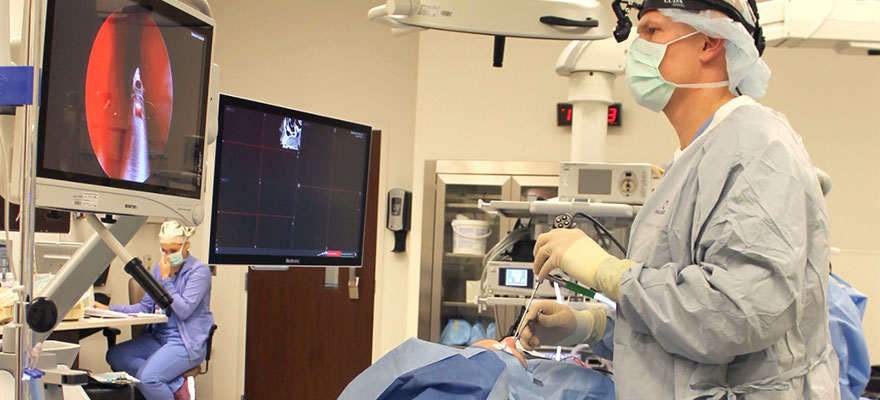Image-Guided Relief for Chronically Painful Sinuses
- Winter 2020

Each year over 4 million Americans are diagnosed with chronic sinus infections, also known as chronic sinusitis. To help local patients who live with chronic sinusitis, Brookings Health offers image-guided sinus surgery and balloon sinuplasty.
Sinuses are tiny, air-filled cavities located in the skull. They create mucus to keep nasal passages clear from allergens and pollutants. But when the tissues lining the sinuses swell, the openings can become blocked, trapping mucus and air inside and causing pressure.
Acute sinusitis following a cold or allergy symptoms is quite common. According to the American Academy of Otolaryngology, it affects around one in eight adults per year and most cases can be treated at home with improvements seen in a week to 10 days.
Chronic sinusitis is when symptoms last for more than 12 weeks. For some people, the symptoms linger for years, making it difficult to breathe due to constant sinus blockage and swelling. Risk factors include year-round allergies, a weak immune system, frequent respiratory infections and cigarette smoking.
The cause of chronic sinusitis isn’t always obvious. Structural problems within the nasal passages, such as a deviated septum, or growths, such as nasal polyps, can prevent the sinuses from draining. For patients who do not respond to medication, image-guided sinus surgery may be the best treatment option.
To avoid scars, sinus procedures are typically performed through the patient’s nasal cavity, a very fragile area. ENT surgeons who perform image-guided sinus surgery use a surgical platform and navigation system. The surgical platform creates 3D images using pre-operative CT scans of the patient’s sinuses. At the beginning of surgery, the surgeon scans a patient’s head to match it up with the CT scan. An electromagnet field is then established around the patient’s head so the surgeon can guide and track instruments in real-time via the 3D images. Using a magnifying endoscope, the ENT surgeon removes the affected tissue and bone.
As a part of image-guided sinus surgery, ENT surgeons may perform balloon sinuplasty, a minimally invasive procedure that dilates sinus openings. During balloon sinuplasty, a surgeon inserts an endoscope into the nasal passage. After reaching the sinus cavity, the surgeon slowly inserts a small balloon catheter. Once correctly positioned, the surgeon slowly inflates the balloon catheter, pressing against the sinus walls to slightly fracture the bone and force an opening.
The goal of sinus surgery is to flush out infected material, open up blocked passages and keep enough healthy tissue so that a patient’s nose and sinuses can function normally. The surgery resolves most patients’ symptoms, such as nasal congestion, facial pressure and sinus headaches. In addition, most patients experience significantly fewer sinus infections.
Want to learn more about ENT services available at Brookings Health System? Visit brookingshealth.org/ENT.

